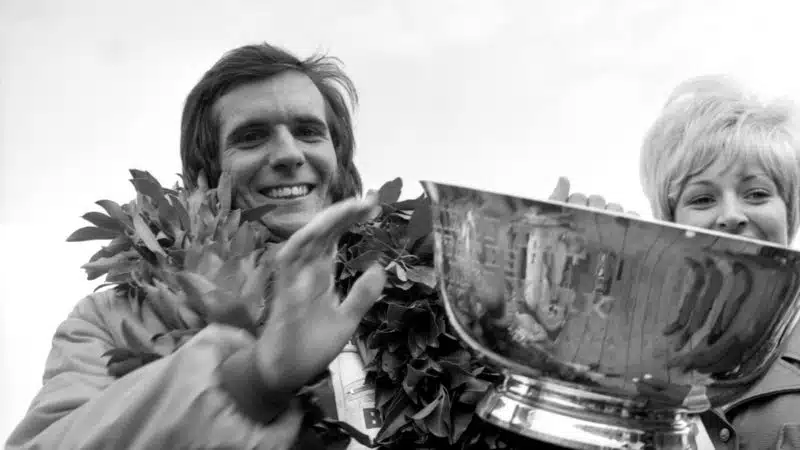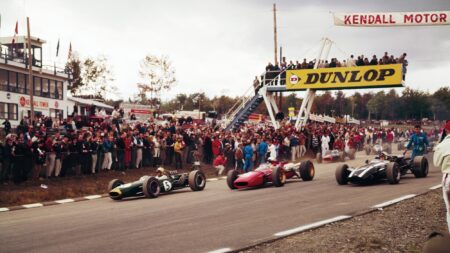Why was the Glen so good? It was quick, fluent and undulating, its corners all challenging until the introduction in 1975 of a chicane in the middle of what had been fast uphill esses, where Cevert had died two years before, and its asphalt was smooth by the standards of the 1960s, although a few querulous drivers had begun to call it ‘too bumpy’ by the late 1970s. The majority of the quick men tended to like it a lot. Jackie Stewart described it as “not the most difficult or demanding racetrack in the world, but a good racetrack, and a fair racetrack”. Faint praise? Perhaps, but JYS uttered those words in 1974, his first year as a pundit rather than a driver, and it is possible that within his rhetoric was couched a desire to downplay the heroism of the men who were still strutting their stuff where so recently he had held dominion. Moreover, the previous year he had called the Glen’s esses “along with the Harbour Chicane at Monaco, the most demanding corners in the racing world”, which was probably what he really thought. When you consider that he and his comrades were racing in those days at places as intimidating as the old Nürburgring, the old Interlagos, Österreichring, Montjuïc and Clermont-Ferrand, that is saying something.
Emerson Fittipaldi, who scored his maiden grand prix victory at the Glen in 1970, in only his fourth championship F1 start, said it was “like Mosport, a bit scary and full of elevation changes, but on a bigger and better scale”. Mario Andretti was often unbeatable in 1978 in the superb ground-effect Lotus 79. He did not win at the Glen that year – he crashed his intended race car in the race-morning warm-up, he never felt comfortable in the spare, and its engine anyway went bang after 27 laps – but in qualifying the day before he had been untouchable. “Man, the 79 was made for this track,” he had said. ‘When I got through that turn at the end of the straight without braking and came out with more revs on the clock than before, I knew I was on a quick one. It’s the sort of lap you can do only once. That’s why I came in and parked it straight afterwards.” He had been right. No-one else had got anywhere near him and that quali lap had ended up 1.065sec faster than anyone else’s.

Villeneuve wet-weather masterclass in ’79
Getty Images
But the most brilliant driving ever seen at the Glen was an extraordinarily bravura display, by Gilles Villeneuve, in 1979. On the Saturday, on a dry track, Alan Jones bagged the pole in his Williams with a lap time of 1min 35.615sec. On the Friday the rain had been truly torrential, and all but six drivers had duly stayed in their pit garages. Four of those six had tiptoed around, slip-sliding away, recording lap times of around three minutes.





